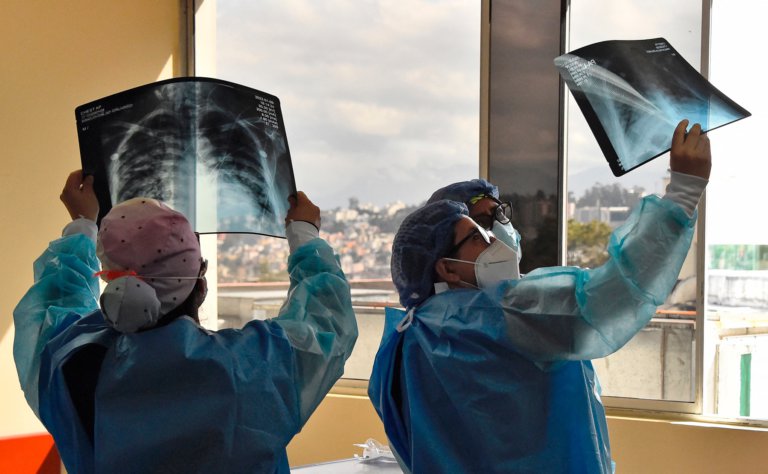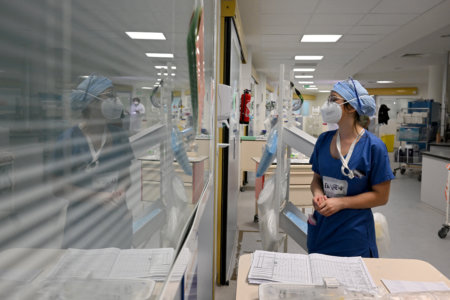
X-rays, magnetic resonance imaging (MRI), and sonography and are vital parts of the medical diagnostic process. Doctors use these scans to detect bone fractures, cancer, and blood clots. It’s used in tests such as CT scans and ultrasounds. Now, there are even three-dimensional colour X-rays touted to “eventually help diagnose cancers and blood diseases without invasive surgery”. Simply put, these tools are an indispensable part of modern medicine.
This makes radiographers and radiologists key professions in the medical field — attracting more young professionals to this specialisation. If this is you, read on for an introduction.

A radiologist looks at a computer screen while a patient (background) stands during a full-body radiography allowed by the new EOSedge 3D Imaging system at the Madonuccia radiography center on July 20, 2020 in Ajaccio on the French Mediterranean island of Corsica. Source: Pascal Pochard-Casabianca/AFP
Radiography vs radiology: What’s the difference?
While medical imaging technology is at the core of both professions, radiographers and radiologists perform different roles. Radiographers are responsible for carrying out the scans with medical imaging technology, while radiologists review and interpret scans to diagnose diseases. A major distinction is that radiographers need only complete a radiography programme and certification, but radiologists must be fully-licensed physicians.
What do I need to study radiography and radiology?
Radiologists are technologists and technicians. You need only obtain a pre-university qualification to get admitted into a radiography and medical imaging course. You may also be able to enter a diploma programme after high school.
On the other hand, radiologists typically pursue radiology studies after completing medical school, including internship and residency. You must therefore have an undergraduate degree and medical degree prior to exploring radiology.

Scotland’s First Minister Nicola Sturgeon talks to radiography student, Sarah Hallissey (front) and senior radiographer Colin Anderson (R) in the x-ray suite during a visit to the Out-Patients Department of the new East Lothian Community Hospital in Haddington, East Lothian on March 21, 2018. Source: Jane Barlow/Pool/AFP
What will I learn?
You can do a two-year associate degree programme or a four-year bachelor’s degree programme to become a radiographer. Radiography students can learn to perform all types of imaging scans, or they can specialise in procedures such as mammograms or ultrasounds, and proceed to get licensed. Prepare to study and understand the structure of the body, along with how it is affected by different types of injuries. You will learn to use various medical imaging machines and tools.
Besides that, you will also cultivate good bedside manner; after all, radiographers prepare patients physically and mentally for these tests. This includes explaining the procedure and upholding safety measures.
Since radiologists specialise in interpreting medical imaging test results, their education goes one step further. Expect to build on your human anatomy knowledge by learning to decipher medical images and write up diagnostic reports.
Radiographers and radiologists commonly work in hospitals, but the opportunities do not end there. Their expertise is also required in veterinary clinics, equipment sales, as well as forensic, military, and university labs.










